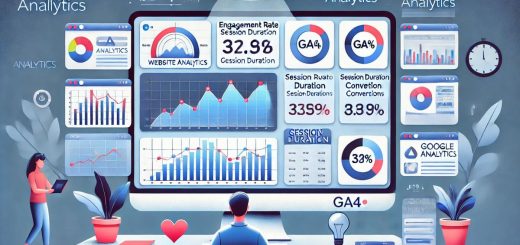Boost Your Digital Marketing Strategy with Google Trends: 3 Actionable Ways

Learn how to leverage Google Trends for competitor benchmarking, analyzing brand awareness, and forecasting product demand to drive smarter digital marketing decisions.
30-Second Summary:
Discover how Google Trends can transform your digital marketing efforts through competitor benchmarking, brand awareness analysis, and demand forecasting. Learn actionable tips on using real-time search data to stay ahead of the competition and optimize your marketing strategies for better ROI.
3 Ways Google Trends Can Supercharge Your Digital Marketing Strategy
In the fast-paced world of digital marketing, staying ahead of trends and your competitors is critical. Google Trends, a free tool that offers real-time data on search term popularity, is a powerful resource that can help you achieve just that. Google has shared three actionable ways to use Google Trends to enhance your marketing strategy—competitor benchmarking, brand awareness analysis, and forecasting product demand. Let’s dive into how you can leverage these insights to boost your marketing efforts and make more informed decisions.
1. Competitor Benchmarking
Google Trends allows you to compare your brand’s search performance against competitors. By analyzing the search volume for key terms associated with your business and comparing them to competitors, you can identify gaps and opportunities. Use the “Categories” option to filter specific industries and see where your competition is excelling. Don’t forget to explore subregion trends to target geographic areas with the highest demand, improving the focus of your online marketing efforts.
2. Brand Awareness Analysis
Tracking the search volume for your brand over time is essential to understanding how well your marketing campaigns are performing. Google Trends lets you analyze brand awareness by showing related search queries and how they evolve. By examining rising and top search terms, you can determine what people are associating with your brand and adjust your messaging accordingly. Don’t forget to use the YouTube Search category to monitor how your brand is perceived through video content.
3. Forecasting Product Demand
Understanding product demand is crucial for inventory management and marketing promotions. With Google Trends, you can monitor how interest in certain products fluctuates over time. This insight is invaluable for predicting demand spikes and planning inventory accordingly. For instance, if you notice rising search interest in related queries (e.g., “charcuterie boards” trending alongside “cheese platters”), you can capitalize on this trend by adjusting your product offerings or content strategy.
By leveraging Google Trends, marketers gain access to real-time data that can shape smarter marketing strategies. Whether it’s staying ahead of competitors, tracking brand perception, or forecasting demand for products, these insights can improve targeting, boost brand visibility, and enhance ROI.
Without using tools like Google Trends, many businesses miss out on key data that could give them a competitive edge. Failure to track evolving search trends can lead to ineffective marketing efforts and missed opportunities.
Google Trends is more than just a tool for identifying popular search terms—it’s a comprehensive resource that can help you refine your marketing strategies. By using it for competitor benchmarking, brand awareness analysis, and product demand forecasting, you’ll be better equipped to make data-driven decisions and stay ahead of the curve.
Takeaway:
Make Google Trends your go-to tool for digital marketing. Stay ahead of competitors, understand your brand’s market position, and predict demand to optimize your marketing efforts.



